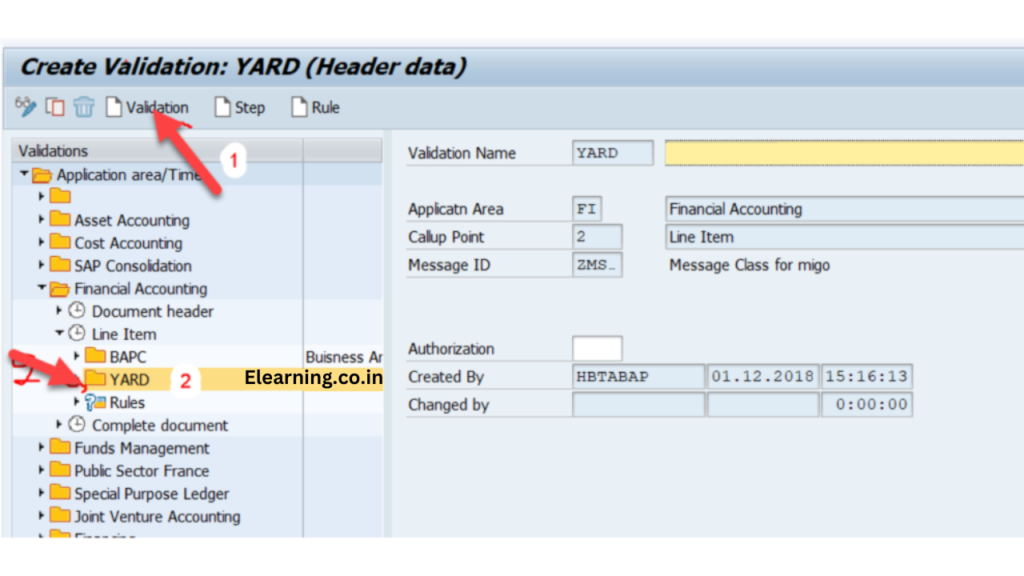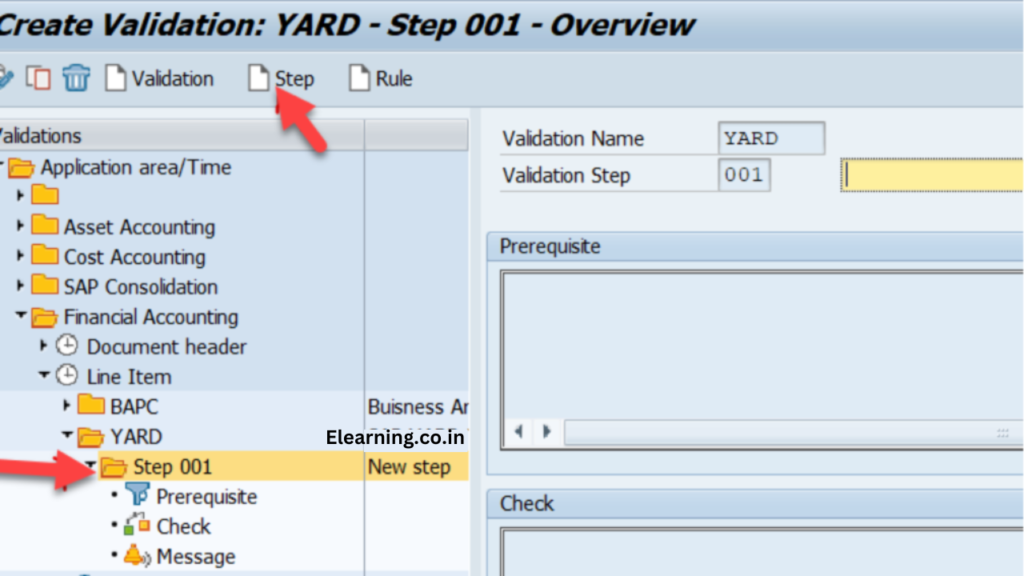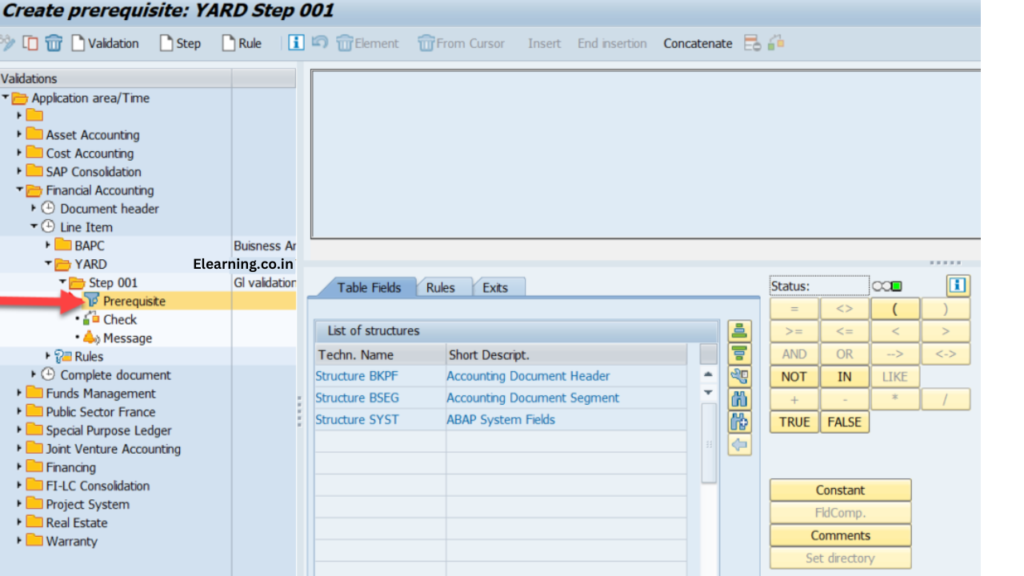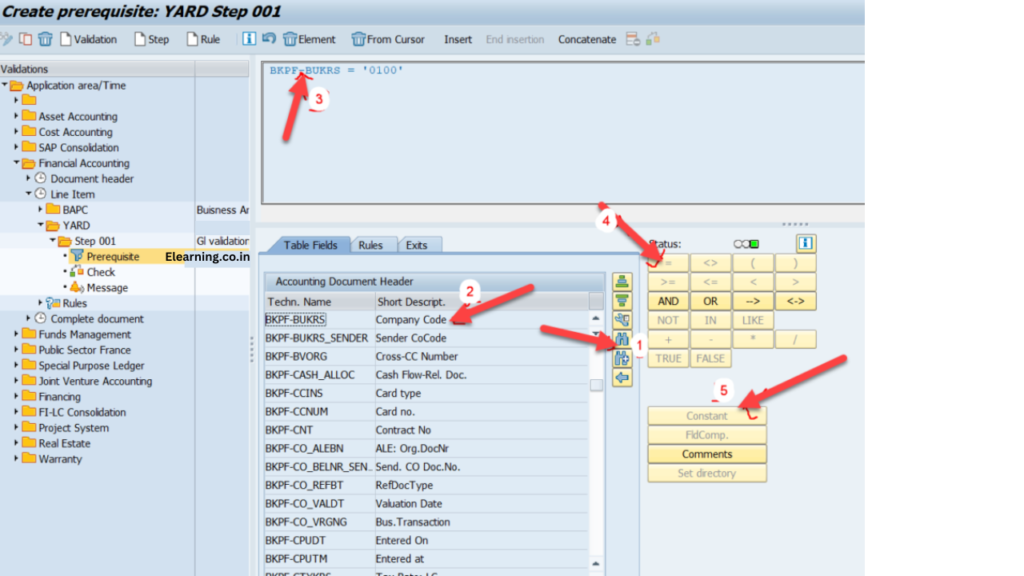Necessity:
To FI Accounting Validation using T-code GGB0, you can limit specific users and transaction codes to utilize a particular GL account with the GL account indicator “T”. This ensures that only authorized users and transactions can access or post to the designated GL account, enhancing the accuracy and control of your financial processes.
- Special GL account can be N number.
- T-Code can be N number.
What we can do:
- We can find BADI or Ways out for each t code and can put approval for every single one of them yet it would be an unwieldy cycle. Also, we could miss something or the other.
- Track down a typical BADI or Exit for approval on same yet there probably won’t be one normal BADI or Exit to do as such.
- Practical can do design (in SPRO) however it is likewise impractical in light of the fact that the necessity is to limit client for explicit T-Codes and not a summed one up.
After some serious conceptualizing and meaningful conversations with the practical and business groups, I figured out how to achieve this by utilizing GGB0 (Approval Upkeep).
What is GGB0?
GGB0 is the exchange code to Make and Keep up with Approvals.
Some other t-codes and parts which helps and supports us in GGB0 Approvals are:
- GS01: This t-code is to Create Set.
- SET: Set is like a Range. We can also use particular value.
- OB28: This t-code is for validation of Accounting Document to Activate and deactivate GGB0 Validations.
Let’s start.
Step 1: – Go to GGB0 T-code – Financial Accounting

Step 2: – There are 3 options: Document Header, Line Item and Complete Document
- Document Header is to Placed Approval on Header Level.
- Line Item is to approve at detail level.
- Complete Document is about the Standard and Help Report for approval.

Step 3. As per Our requirement we will work on Line Item.
We have made YARD as our approval name and any remaining subtleties connected with it is in the underneath picture.

Step 4. There are 3 Buttons on the top of the screen: Validation, Step & Rule
Validation – To make new approval.
Step – Is utilized to give the subtleties of approvals. N number of steps are workable for one Approval Name.
Rule – To characterize theValidation Rules.

STEP 5: Click on Step 001 and it will have 3 Options: Prerequisite, Check &Message
Prerequisite – Here we can program and compose code (approval Conditions) utilizing Table field and Status.
Check – Condition checks.

Message – Here we can compose our custom Messages. Fitting best practice is to make message class.
STEP 6: Click on Prerequisite – Can write code (conditions) as shown below

Additionally, characterize the prerequisited for ‘T’ Type marker, as to Choose BSEG-UMSKZ = ‘T’. UMSKZ field holds – Extraordinary G/L Pointer.

STEP 7: Click on Check and perform similar activities as on Step 6
Here Client ID is SET (Reach) – Client list
SET is made utilizing T-code GS01 (Made sense of in resulting Steps)

STEP 8: – Click on Message and Use your appropriate message class and number

STEP 9: Click on Step 001. It will show your Condition and Message

STEP 10: Create SET Using T-code GS01
Here I am making Organization Code SET for example for these specific organization code(s) our approval will work.

STEP 11: Give Company Code values and SAVE

STEP 12: Create SET for T-code

STEP 13: SET(s) can be used as shown below

STEP 14: Now Go to OB28 and Active your Validation and Save
There are 3 choices in Actuation Level. 1 is for Dynamic


STEP 15: Time to Test
How about we check in the event that our approval works or not.
We have kept up with the important t-codes in SET (GS01) and the approval works just and just for the SET kept up with.

We attempted to post a record utilizing t-code FB01. Since FB01 is there in the SET, consequently the approval gets set off.

It’s giving the blunder message true to form. It’s fruitful.

As a specialized engineer and backing work force, you want know how to investigate the Approvals?
STEP 16: Go to transaction code GGB0 and run command Prompt =SHCD

Then, at that point, it will take you to the Source Code. Suppose in the event that you are utilizing Stage 001, put Break Point at Stage 001

Furthermore, execute your T-code and investigate the issue.
How to save the validation in the transport request?
Go to t-code GGB0. Select your approval (put a cursor on it).
Then go to Menu -> Validation -> Transport.

Some of the useful Transaction Codes for Validation:
- GGB0 – Validation Maintenance
- GGB1 – Substitution Maintenance
- GCVZ – Rule Maintenance
- GGB4 – Action selection for validation/substitution, for example, activation of application areas, use of all messages or substituted fields
- GCX2 – Definition of the Includes for user exits
- OB28 – Activation of FI validations
- OBBH – Activation of FI substitutions
- OBBZ – Activation of cost of sales accounting substitution (in the FI area)
- OKC7 – Activation of CO validations
- OKC9 – Activation of CO substitutions
- GCT9 – Transport: Validations
- GCT0 – Transport: Substitutions
YOU MAY BE INTERESTED IN
10 Real-World SAP ABAP Programming Examples (with Code!)
SAP ALE IDoc Configuration Steps: Streamlining Communication





